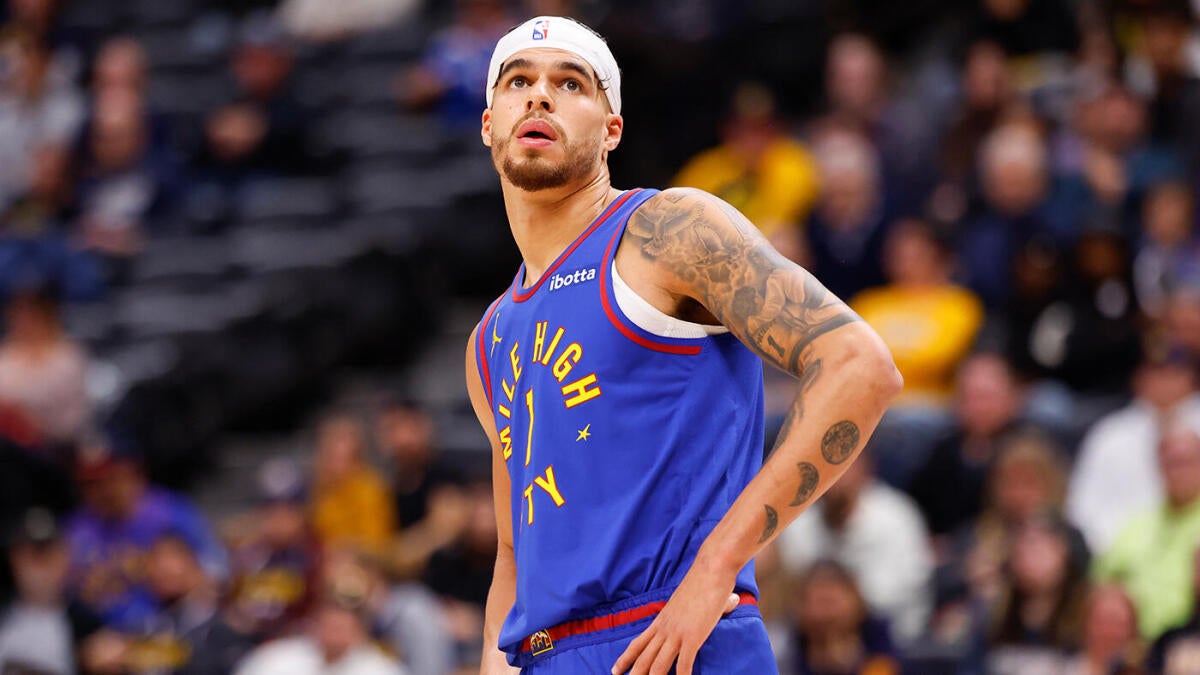The Denver Nuggets’ trade of Michael Porter Jr. to the Brooklyn Nets in exchange for Cam Johnson and an unprotected 2032 first-round pick marks a pivotal moment in the NBA’s 2025 season. This transaction, while seemingly straightforward, carries profound implications for both franchises, influencing their roster dynamics, financial strategies, and long-term competitive aspirations. The move reflects Denver’s strategic pivot toward a more balanced, championship-ready roster, while Brooklyn embraces a rebuild centered on youth and future assets.
The Strategic Shift in Denver
The Nuggets’ decision to trade Porter Jr. underscores their commitment to constructing a roster that complements Nikola Jokić’s MVP-caliber playmaking. Porter Jr., a 26-year-old forward with a career average of 18.3 points per game and a 38.8% three-point shooting rate, brought offensive firepower to Denver. However, his injury history and defensive inconsistencies made him a liability in critical moments. By acquiring Cam Johnson, a 28-year-old wing known for his elite three-point shooting (40.1% career three-point percentage) and reliable defense, the Nuggets address two key areas of need: spacing and perimeter defense.
Johnson’s ability to stretch the floor and defend multiple positions aligns perfectly with Denver’s championship aspirations. His presence alongside Jokić provides the Nuggets with a more predictable offensive threat, reducing the reliance on Porter Jr.’s inconsistent availability. Additionally, Johnson’s defensive versatility helps mitigate the defensive liabilities that plagued Denver’s lineup in previous seasons. The trade also offers Denver financial flexibility, as Johnson’s contract is more manageable in the long term compared to Porter Jr.’s.
Brooklyn’s Rebuild and Future Prospects
For the Brooklyn Nets, the acquisition of Porter Jr. and an unprotected 2032 first-round pick represents a significant step in their ongoing rebuild. Porter Jr.’s scoring ability and versatility as a forward provide the Nets with a high-ceiling asset to develop alongside their young core, including recent draft picks like Nikola Topić. His potential to average close to 20 points per game offers immediate offensive firepower, a critical component for a team aiming to return to playoff contention.
The unprotected 2032 first-round pick further bolsters Brooklyn’s asset base, providing them with additional flexibility in future trades or drafts. However, the Nets must carefully manage Porter Jr.’s injury risk and integrate him effectively on the defensive end to maximize the deal’s value. Porter Jr.’s defensive liabilities could pose challenges, but if he can improve in this area, he could become a cornerstone of Brooklyn’s rebuild.
Long-Term Implications and Risks
The trade highlights contrasting team-building philosophies. Denver’s decision to part ways with a young, high-upside scorer and a future first-round pick demonstrates their confidence in their current core and their willingness to prioritize immediate success. The Nuggets’ roster now features a more balanced mix of scoring, shooting, and defense, positioning them as serious contenders in the Western Conference.
For Brooklyn, the trade represents a bet on the future. By acquiring Porter Jr. and a valuable draft asset, the Nets are investing in long-term growth and flexibility. However, they must navigate the challenges of integrating a player with Porter Jr.’s injury history and defensive inconsistencies. If Porter Jr. can stay healthy and improve defensively, he could become a key piece in Brooklyn’s rebuild. Conversely, if injuries continue to plague him, the Nets may find themselves with a valuable draft asset but a less impactful player.
Conclusion: A Bold Recalibration for Both Franchises
The Denver Nuggets’ trade of Michael Porter Jr. to the Brooklyn Nets for Cam Johnson and a future first-round pick is a calculated move that reflects both teams’ strategic priorities. Denver’s acquisition of Johnson enhances their championship window, providing them with a reliable shooter and defender to complement Jokić’s playmaking. Meanwhile, Brooklyn’s acquisition of Porter Jr. and a valuable draft asset positions them for a rebuild centered on youth and future flexibility.
As the 2025 NBA season unfolds, the implications of this trade will become increasingly clear. Denver’s decision to prioritize immediate success over long-term assets could pay dividends if they can maintain their roster’s health and continue to build around Jokić. Conversely, Brooklyn’s bet on Porter Jr.’s potential and future draft capital could set the stage for a resurgence in the coming years. Regardless of the outcome, this trade serves as a reminder of the complex decisions that shape the NBA landscape, where the pursuit of championships often requires bold, strategic moves.

